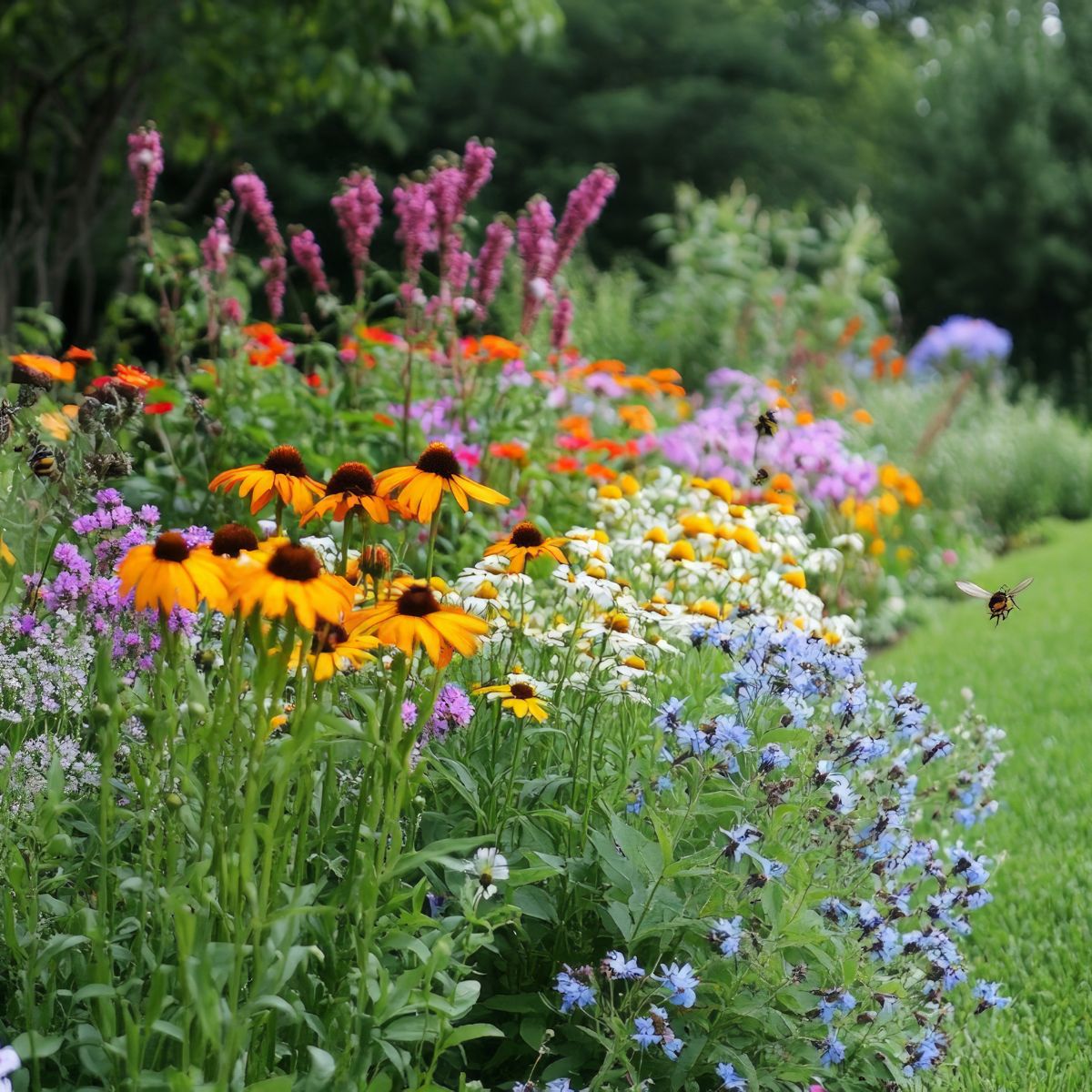If you are looking for a beautiful, resilient way to rewild some or all of your backyard, look no further than tree guilds. Also known as a permaculture garden, a tree guild is centered around a fruit or nut tree and incorporates a diverse group of plants that work together in harmony.
What Is a Tree Guild?
Tree guilds consist of a group of different plant species with diversified functions that work together to capitalize on the natural patterns of biodiversity. They are low-maintenance, self-sufficient systems.
Naturally occurring guilds are found everywhere in nature. If you have ever walked through a field or forest that has been allowed to develop naturally, you might have noticed how the plants group together, supporting one another in various ways and layering themselves to reduce competition for sunlight.
The focal point of a guild is most often a fruit tree or a nut tree. Plants surrounding the tree enhance and support its growth by
- providing fertilizer
- deterring pests
- producing mulch
- suppressing grass and weeds
- attracting pollinators
- supporting wildlife

What to Plant in a Tree Guild
For the perfect fruit or nut tree guild, you’ll want plants that serve the various functions listed above. If you have one or two varieties of plants that support the guild in each way, it will prosper.
Fertilizers – Certain plants act as accumulators, enhancing the soil by absorbing and retaining nutrients. The most common nutrient your fruit or nut tree will need is nitrogen. Nitrogen fixers convert nitrogen from the atmosphere into a form that is available to plants.
Nitrogen-fixing groundcover options include alfalfa and all types of clover. Annuals such as lupin, broad beans, peas, and beans can be used, as can perennials such as ceanothus, Carmichaelia (commonly known as New Zealand brooms), kaka beak, and dyer’s greenweed. Comfrey is the most commonly used “all-purpose” fertilizer for guilds, but chickweed, yarrow, strawberries, and sorrel also work well.
Pest deterrents – Plants that pack a strong scent confuse and deter pests. Such plants are best placed around the edges of your guild as well as dotted throughout. Herbs like rosemary, mint, chives, and sage are great, as are marigolds, wormwood, and garlic.
Mulcher – Plants that provide organic matter to the soil increase moisture retention and overall soil health, which not only supports the plants but also reduces erosion. Comfrey, which we mentioned above as an excellent fertilizer, also provides mulch. Other ideal options are rhubarb and hostas.
Grass and weed suppressant – We don’t need to tell you why plants that suppress the growth of unwanted grass and weeds are beneficial. But did you know these plants also help decrease watering needs for the guild? Varieties of clover, rhubarb, and strawberries are excellent choices for suppressing weeds, as are squash and pumpkin.
Pollinator attractor – Plants that bring pollinators to your yard help everything prosper and enhance the biodiversity of your guild. Bees and butterflies love salvia, sunflowers, milkweed, and bee balm as well as various herbs such as fennel, lavender, and dill.
Wildlife support – Having plants that provide habitat and food for wildlife supports the ecosystem health of a guild. Fruit shrubs provide berries and nesting sites for birds. Elderberry and hawthorn plants attract both birds and insects.
How to Build a Fruit Tree Guild
As with any seemingly big project, getting started is easier when you take it piece by piece. Start by determining the trees you want to plant—fruit, nut, or both! Ensure you plant a tree that will thrive in your specific hardiness zone. If you have a smaller space, explore dwarf fruit trees or berry bushes. Your tree or bush will become the center of your guild.
Prepare your space – Decide the shape and size of your guild. A good rule of thumb is to plant out to where the canopy of the mature tree’s size will reach. Dig out any grass, weeds, or existing plants you want removed. To ensure good drainage, you might also consider terracing the ground.
Running a soil test will reveal if any nutrients are lacking in your soil. Nutrient levels, soil pH, texture, and structure all impact plant success. After your soil test, you can address any underlying issues and choose plants that will help combat these issues in the long term. If you can add a layer of compost as a base before planting, this will also help establish healthier soil moving forward.
Pick your plants – There is no perfect formula, but once you have your guild space prepared, you can start to determine how many plants you’ll need to fill the space. If you follow the guidelines and plant a few of each kind of plant listed above, you should be in good shape! It’s helpful to lay out your potted plants in the zoned area before digging. This way, you can rearrange items as needed until you are happy with the layout.
The initial setup will be the most time-consuming, cost-intensive part, but if you pick the right plants, maintenance on your fruit tree guild should be minimal. As the plants become established, they will become their own ecosystem and create a beautiful, resilient garden.
Resources:
Copyright 2025 Center for Nutrition Studies. All rights reserved.







